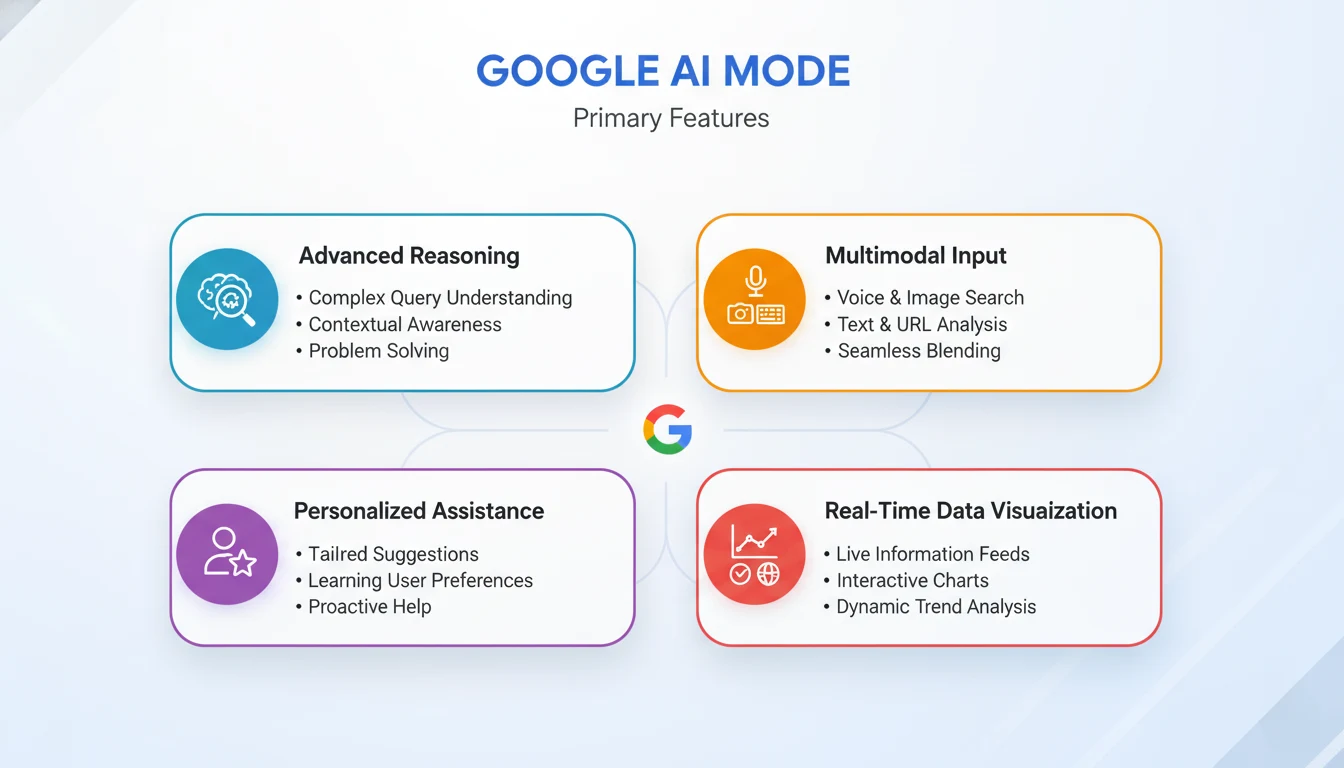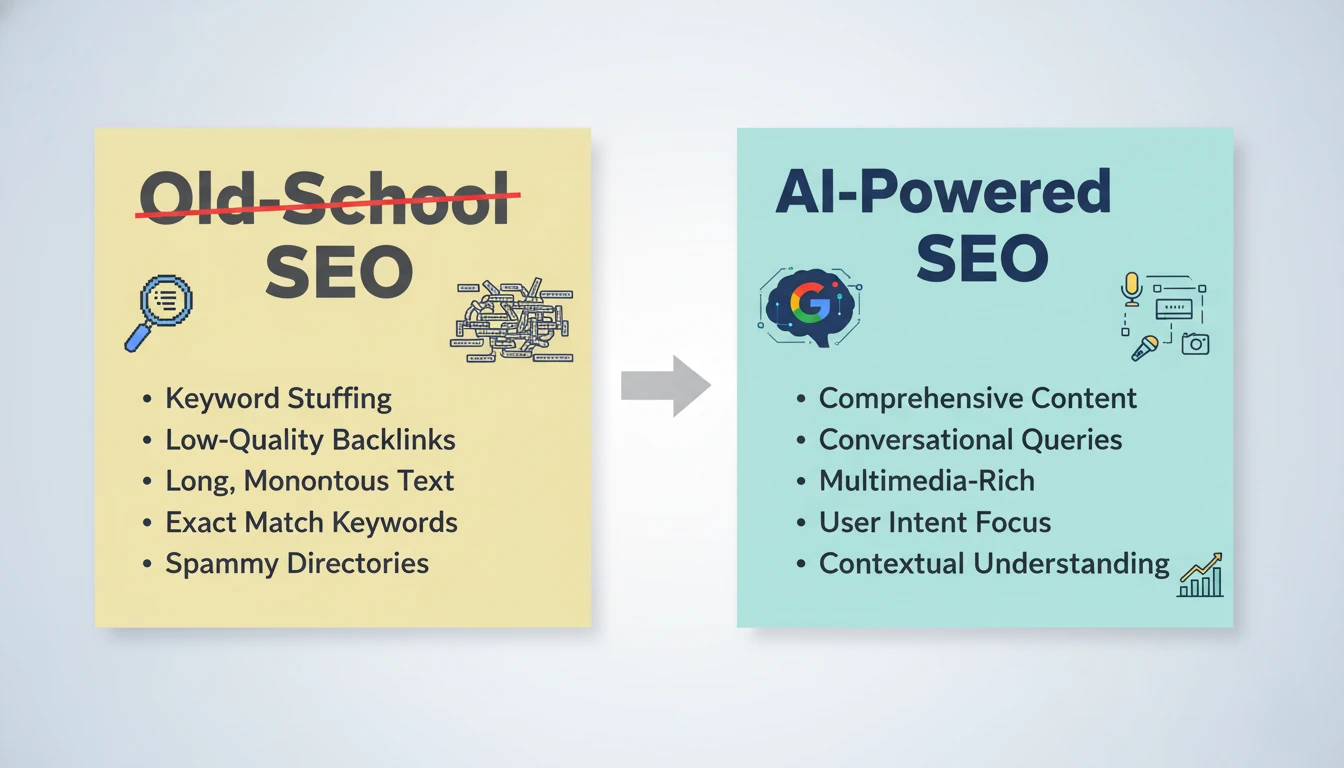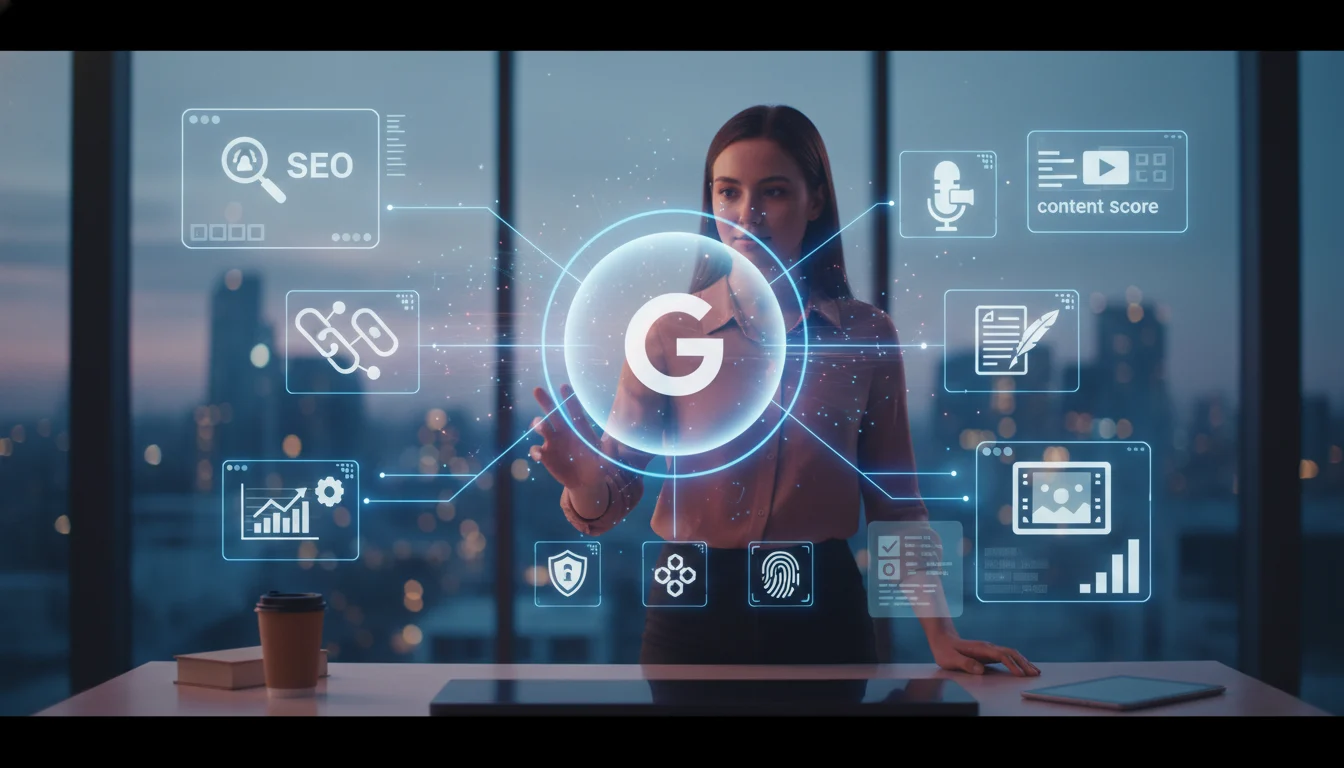Google AI Mode: The Future of AI-Powered Search and How to Use It
Introduction to Google AI Mode: The New Frontier in Search
Google AI Mode is redefining online search in 2025, transforming it from basic keyword matching into a sophisticated, context-aware journey. By leveraging powerful Gemini AI models, it becomes an intuitive assistant, responding with insightful, conversational answers. This AI-powered search understands nuance, context, and the user’s true intent, offering a level of personalization unheard of in previous search paradigms. Now, whether your question is simple or complex, you can expect Google AI Mode to meet your needs with precision, depth, and a human-like touch.
Gone are the days when users had to wade through multiple search result pages just to piece together relevant information. With Google AI Mode, answers feel custom-built—drawing from the latest real-time data, summarizing in easy-to-understand language, and displaying related insights at a glance. The integration of applications like Gmail, Calendar, and even Maps enables search results to become more personalized and relevant, adapting recommendations based on individual routines and interests. This marks a leap in digital convenience, reducing research time and amplifying user satisfaction across demographics.
Another defining feature is the system’s embrace of multimodal interactions. Users can switch effortlessly between text, voice, and even image-based queries, making information-seeking not only faster but also more accessible. It recognizes prior queries, preserves conversational context, and keeps communication fluid—mirroring the natural cadence of human dialogue. As a result, users find themselves having richer, more productive conversations with Google than ever before, further blurring the line between search engine and personal assistant.
The commitment to accessibility is another pivotal strength. Google AI Mode rolls out its full suite of capabilities globally, ensuring that users in diverse regions—from India to the Americas—benefit from the full possibility of AI-powered search. By democratizing access to advanced technology, It ensures that barriers to information are continually lowered. For tech-savvy and first-time users alike, the intelligent design improves digital literacy and helps millions tap into the next generation of search with ease.
Ultimately, this mode is not just a new feature but a reimagining of the entire search experience. It makes discovering information smarter, more intuitive, and profoundly human-centric, setting a new gold standard for what users should expect from online search in the AI era.

How to Use Google AI Mode for Search: Step-by-Step Guide
Activating Google AI Mode is simple but opens the door to a world of advanced features and unique discoveries. Start by launching the Google Search app or updating your Chrome browser—once available, a dedicated AI button or tab becomes visible on the interface. Tapping the button invites you to engage directly with Google AI Mode; from there, type, speak, or even upload an image to pose your question. The AI engine then quickly delivers conversational, clear, and deeply informative answers, pushing the boundaries of what everyday search can be.
Contextual searching takes center stage with Google AI Mode. Unlike older systems, you don’t need to repeat your query with every follow-up. Instead, the AI remembers what you last asked, letting you build on your conversation naturally. This feature is invaluable for research, shopping, planning, and troubleshooting complex problems. As you search, it tailors its responses using previous interactions, learning your preferences, and serving relevant results that save both time and effort.
One of the hallmarks of this Mode is its support for multimodal input. Text isn’t your only option—you can use voice commands to search hands-free or image uploads to identify products, analyze photos, or solve visual challenges. This seamless adaptability is particularly useful for users with varying needs and accessibility requirements. Whether you’re a busy professional, a student on the go, or someone who prefers visual communication, AI-powered search adapts to you.
Personalization and privacy controls offer further customization. You can opt to connect your Google apps for results tailored from your Gmail, Calendar, or Docs, making search context-aware but always respecting your preferences. All personal data integration is fully optional, giving users maximum control over how much information feeds into AI-powered search. This ensures a balance between relevance and privacy, a critical consideration as search becomes smarter and more anticipatory.
Learning how to use Google AI Mode for search is becoming a must-have skill in 2025. Once you’re familiar with its interactive capabilities, you’ll find it difficult to return to traditional search engines. The AI’s friendly tone and helpfulness foster trust, turning even mundane queries into opportunities for greater efficiency and deeper learning.

Key Features and Benefits of Google AI Mode
Among Google AI Mode’s impressive array of features, advanced reasoning stands out. The system leverages the Gemini model’s huge knowledge base, processing user queries to deliver not just short answers but nuanced, complete explanations. Whether you’re asking about complex topics, data comparisons, or step-by-step guides, it presents information in well-organized, human-readable summaries backed by AI-powered confidence. This AI-powered search is engineered for understanding, not just returning data, elevating trust and usability for everyone.
Another signature capability is multimodal interaction. It allows users to blend mediums effortlessly—for example, identifying a plant from its photo, dictating a recipe, or requesting data visualizations based on market trends. These features cater to the needs of different users and make complex tasks simple. The platform remembers the flow of your conversation, so you don’t lose momentum during deeper research or project planning.
Personalization remains a core benefit. With consent, Google AI Mode draws from across your Google account—like upcoming events in Calendar, recent files in Docs, or emails in Gmail—to provide answers that are contextually aware. This means requests like “remind me to finish the report” or “show my flight details” truly become part of day-to-day digital workflows. The AI smoothly integrates into your routine, functioning as a real partner in productivity.
It also focuses on delivering visual intelligence. When users request comparisons or statistical insights, the AI generates charts, tables, and even infographics, transforming raw data into actionable visuals. This is especially beneficial for analytics professionals, marketers, educators, and anyone who learns better through visualization. As a result, AI-powered search becomes an educational companion as much as a knowledge base.
Lastly, Google AI Mode emphasizes inclusivity and accessibility. Its intuitive design, natural conversation ability, and broad input options make advanced search viable for users of all backgrounds and abilities. Whether you’re new to technology or a digital native, this tool levels the playing field and brings the best of Google’s AI to everyone.

Impact of Google AI Mode and AI-Powered Search on SEO and Content Creators
The emergence of next-generation search, led by smart platforms like Google AI Mode, has accelerated the evolution of SEO and digital content far beyond previous expectations. No longer can success be achieved through keyword repetition or outdated hacks. Today, visibility is earned through content that is truly authoritative, reader-focused, and tailored to real-life questions people are asking. Long-form guides, deep product breakdowns, timely how-tos, and unique perspectives are now favored, offering more genuine value and inviting higher search rankings as AI-driven algorithms recognize quality and relevance.
This evolution brings a profound shift for the SEO industry. Instead of solely optimizing for exact-match keywords, professionals are now challenged to understand their audience deeply—diving into semantic fields, subtopics, and the variations in searcher intent. Algorithms reward organization, comprehensive coverage, and context. Creators who invest in in-depth FAQ sections, story-driven blog posts, and resources structured for machine reading will find their content surfaced more often in AI summaries and interactive features. As voice assistants and multimodal queries become standard, adapting schema and structuring data for clarity gives websites a crucial edge.
From a marketing standpoint, brands and businesses gain new opportunities—but face taller hurdles, too. Building digital trust is imperative. People—and AI—are looking for transparency, up-to-date references, and original insight. Whether it’s a product review backed by first-hand experience, a buyer’s guide that clearly compares alternatives, or an evergreen tutorial kept current with new developments, content that demonstrates expertise stands out. The most successful brands will combine technical SEO foundations with personal engagement, social credibility, and storytelling that resonates on a human level, knowing that search engines increasingly reflect these factors in their ranking decisions.
On the technical side, websites must be robust and agile. Google’s evolving platform recognizes diverse content types—videos, infographics, interactive tables—and expects sites to be fast, mobile-friendly, and accessible. Using structured data and logical internal linking not only helps bots but also creates a richer experience for human visitors. Investing in core web vitals, accessibility best practices, and cloud-friendly infrastructure ensures creators stay in favor not just with algorithms, but with the real users who depend on them every day to find answers that matter.
In the end, this dynamic environment favors those willing to innovate and grow. Successful creators are always learning—following emerging AI trends, experimenting with new content types, and rapidly updating materials to keep them relevant. Those who see AI not as competition, but as a tool for amplifying creativity and reach, are poised to build lasting influence and success. By embracing comprehensive, conversational, and visually engaging content strategies, creators and brands can thrive as digital search becomes more intelligent, interactive, and essential to everyday life.

Future of AI-Powered Search: Trends and What to Expect
AI-powered search, represented by cutting-edge modes like Google AI Mode, is propelling digital innovation to unprecedented heights. In the future, search engines will not just respond to queries—they’ll anticipate needs, recommend actions, and even proactively generate content tailored to individual requirements. Imagine a search experience where the assistant knows your context, understands your schedule, and provides up-to-the-minute suggestions for everything from travel plans to project management.
This shift also means that search won’t be confined to browsers or apps. Instead, digital assistants will be seamlessly embedded into your everyday devices—smart speakers, car dashboards, wearable tech, and home appliances. Whether you’re trying to troubleshoot a home gadget, organize your finances, or learn a new skill, your assistant will deliver help where and when you need it, often before you even ask. Voice and image search will become the norm; simply speaking or showing something to your smart device will summon insights, recommendations, and concise summaries crafted for you in real time.
The evolution of search engines will go hand in hand with enhanced privacy and trust mechanisms. As AI becomes more deeply integrated into daily life, users will demand clear control over personalization. Expect new tools allowing you to manage data preferences, set limits on information tracking, and decide when and how AI interacts with personal details. This empowerment will foster confidence and encourage more people to embrace advanced digital assistants across their connected routines.
For creators, marketers, and businesses, these developments signal major opportunities and challenges. Staying ahead means continuously evolving strategies—exploring new content formats like interactive guides, video explainers, and dynamic infographics, while remaining active in online communities and tech forums. Collaboration between content creators and AI developers will open doors to more customized, immersive experiences that target user intent rather than just keywords or search volume. This approach will require a blend of creative storytelling, technical optimization, and a keen understanding of emerging search technologies.
Moreover, personalized education and skill-building will take center stage. AI-powered tools will help users learn at their own pace—offering tailored tutorials, answering follow-up questions, and creating unique learning paths designed to build proficiency in everything from coding to cooking. As businesses tap into the power of proactive AI assistants, they’ll reach wider audiences, foster greater engagement, and shape the future of online discovery.
In essence, AI-driven search is transitioning from a passive knowledge retrieval system to an active, forward-thinking companion in everyday life. Success will belong to those who experiment with new formats, foster trust, and focus on genuine value in digital interactions. The era ahead promises more than just smarter answers—it’s a pathway to richer learning, seamless communication, and transformative possibilities for users and creators alike.

Final Thoughts: Google AI Mode and the Future of AI-Powered Search
Google AI Mode isn’t merely an incremental update—it’s a revolution in how we interact with digital information. Leveraging Gemini AI, this mode offers tailored, lightning-fast answers that feel conversational and personal. Search is evolving from a static tool to a proactive assistant, guiding users, offering real-time insights, and raising the overall standard for quality in content and discovery. Google AI Mode helps you explore and understand complex ideas efficiently, setting new expectations for all future search experiences.
Everyone—students, professionals, everyday users—stands to benefit from less time spent hunting for information and more time engaging with valuable content. “How to use Google AI Mode for search” is fast becoming a digital survival skill, empowering users to access, verify, and synthesize information across text, voice, and images. The result is a more inclusive, supportive environment where users of all skill levels can achieve more with less effort.
Content creators, brands, and marketers now face the exciting challenge of staying relevant in an ever-evolving AI-powered search landscape. Success relies on crafting content that’s comprehensive, authoritative, and easy for AI to interpret, as well as engaging and human-centric. Embrace conversational keywords, optimize for multimedia, and consistently deliver authentic value. SEO in 2025 and beyond is about continuous learning and adaptation.
Looking ahead, Google AI Mode points to a world where digital search is more useful, anticipatory, and creative than ever. The combination of privacy controls, AI integrity, and user empowerment signals a promising future—one where technology is proactive but always grounded in user choice and ethics. Following platforms like AI Tech Unboxed will help you stay informed and get the most from every new development.
The digital journey with Google AI Mode is just beginning. Whether you’re here to enrich your productivity, support smart SEO, or simply enjoy faster, smarter search, embracing this hybrid of AI and human insight will unlock new pathways to learning and growth. For more expert guides, AI news, and digital optimization strategies, follow AI Tech Unboxed for more updates.
FAQs
1. What is Google AI Mode?
Google AI Mode is an AI-powered search feature that responds with advanced, conversational answers by leveraging natural language Gemini models, making information discovery faster and more interactive.
2. How do I use Google AI Mode for search?
Enable AI Mode via the Google Search app or Chrome, then type, speak, or upload a photo to get comprehensive, context-aware results in seconds.
3. What sets Google AI Mode apart from regular search?
It preserves conversational context, supports voice and image queries, summarizes complex topics, and personalizes answers for a truly tailored experience.
4. Does Google AI Mode work with voice and image inputs?
Yes. Google AI Mode seamlessly handles voice commands and image uploads, offering multimodal solutions for diverse user needs.
5. What changes does Google AI Mode bring to SEO?
It shifts focus to authoritative, engaging, and semantically relevant content, making conversational keywords like “how to use Google AI Mode for search” more important for ranking in AI-powered results.


